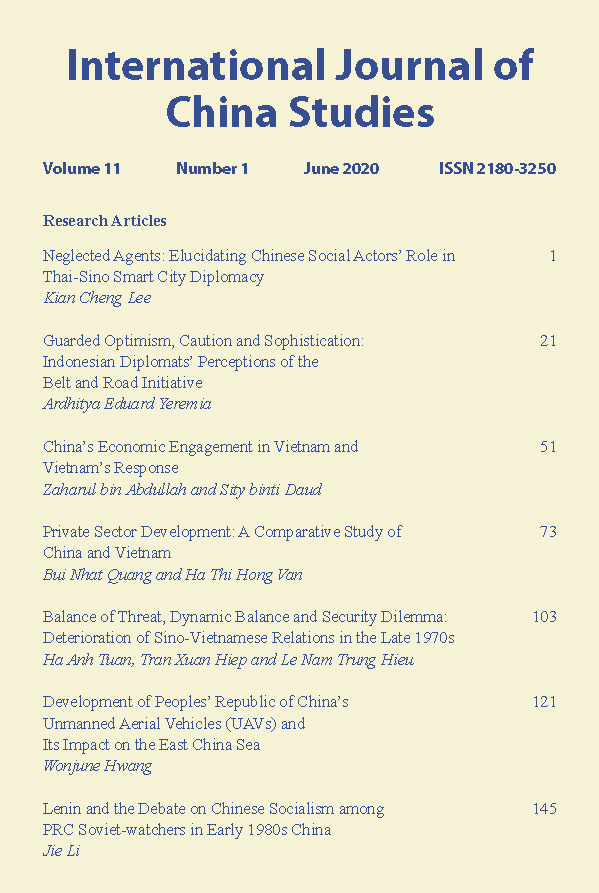Development of Peoples’ Republic of China’s Unmanned Aerial Vehicles (UAVs) and Its Impact on the East China Sea
Keywords:
China, UAV, drone, East China Sea, territorial disputesAbstract
This article analyzes the People’s Republic of China (PRC)’s vibrant development of military unmanned aerial vehicles (UAVs) and their application in the East China Sea. Military UAVs have been proliferating around the globe, and their distinctiveness in low cost both economically and politically accelerates the proliferation. Economically, UAVs reduce costs of vehicles, operation and training of pilots compared to those of manned aircraft. Also, politically, they can lower the threshold of using forces in multiple ways. Thus, military UAVs can be used in bold intelligence, surveillance and reconnaissance (ISR) mission and provide information superiority to whoever use them, which can lead to strengthening influence on disputed territories. The PRC began to develop military UAVs since the 1950s copying technologies from the US and Soviet Union and is now competing with the US in UAV technologies. China is developing UAVs with a government-led top-down approach and lively cooperation among industries, academics and military and strives to expand her influence in the surrounding region. Since Xi Jinping was inaugurated in 2012, he has enforced aggressive policies to secure the control of the sea in the first island chain. Military UAVs are expected to be instrumental in Xi’s strategy in the East China Sea where the PRC has been at odds with its neighbours. The PRC has deployed advanced UAVs such as the BZK-005 and WZ-7 in this region and is deemed to have employed them audaciously for ISR. In response, Japan and the ROC as well have developed and acquired lethal UAVs, which arouses concerns of regional instability.

